Export EAD
Resource Records can be exported as EADs in ArchivesSpace.
Steps to Export EAD
1. Open a Resource Record
Open a resource record in ArchivesSpace in either View or Edit mode
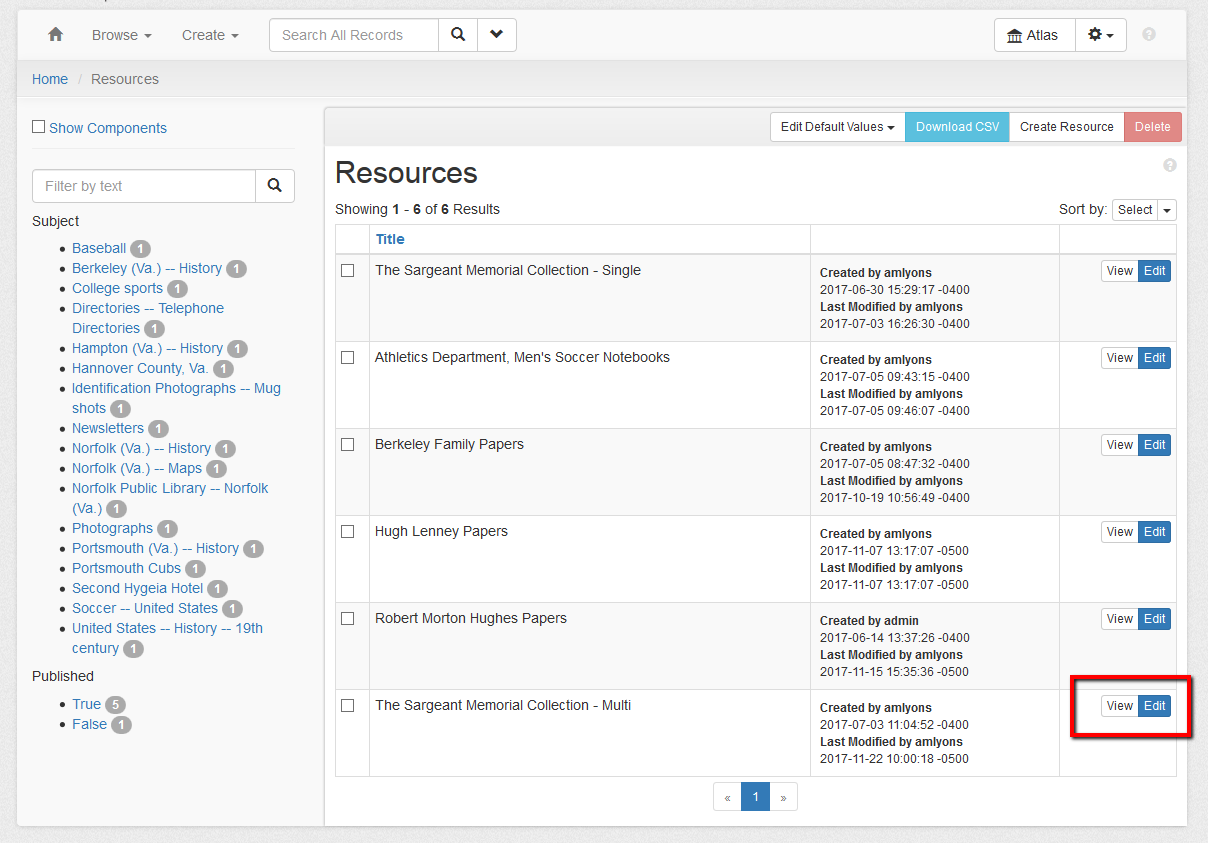
2. Click on the Export Button
Click on the Export button in the toolbar
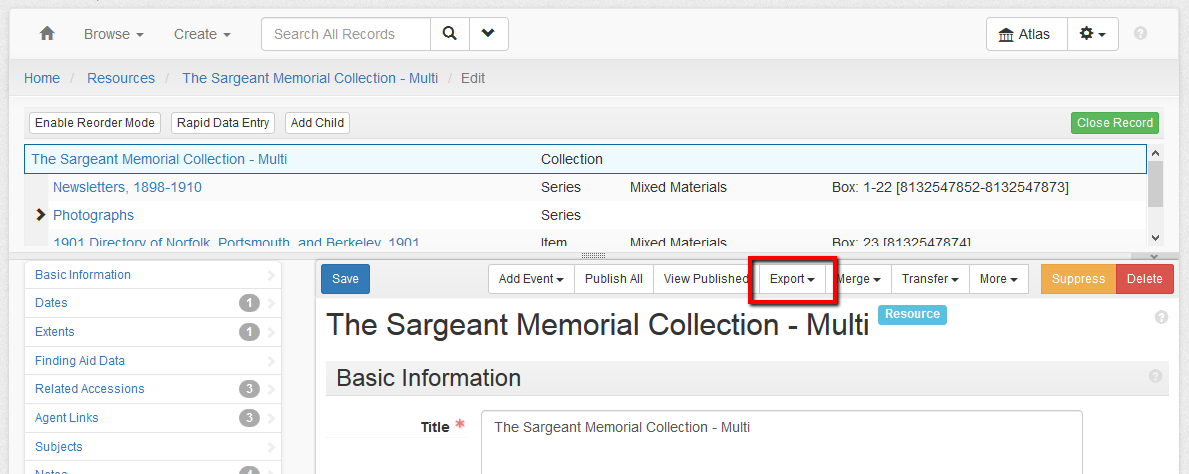
3. Mouse Over Download EAD
Mouse over Download EAD to see the export options menu
4. Select Export Options
In the menu, select whichever options you want included in the EAD:
- Download EAD - Standard EAD export
- Download MARCXML - MARC XML format export
- Download Container Labels - Export container label information
- Print Resource To PDF - Generate a PDF version
- Include unpublished - Include unpublished components in the export
- Include DAO tags - Include Digital Archival Object tags
- Use numbered
tags - Use numbered component tags instead of unnumbered - EAD3 schema - Export using EAD3 schema instead of EAD 2002
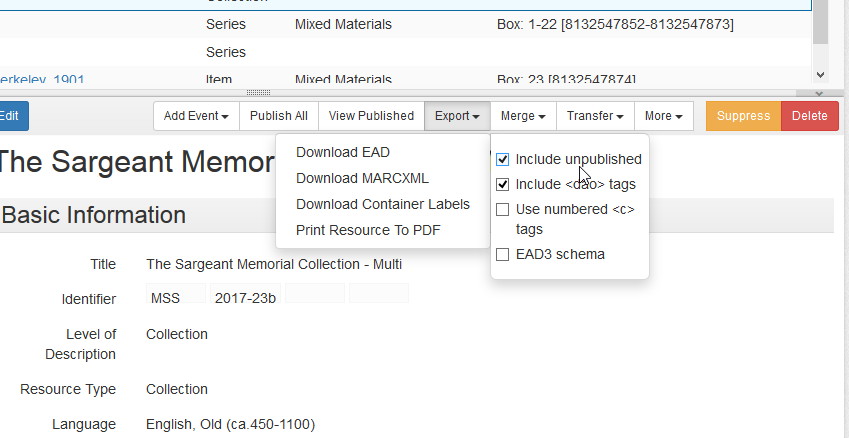
5. Click on Download EAD
Click on Download EAD after selecting your desired options
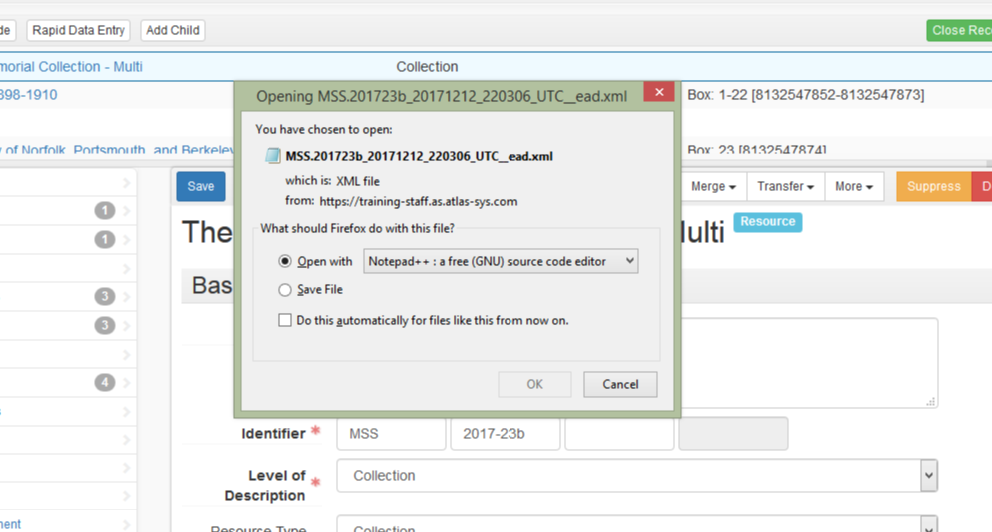
6. Save or Open the File
In the pop-up box, choose to either:
- Open the file with an EAD editor (e.g., Notepad, XML editor)
- Save the file to your local computer
The exported EAD file will contain the complete finding aid in XML format, ready for use in other systems or for publication.
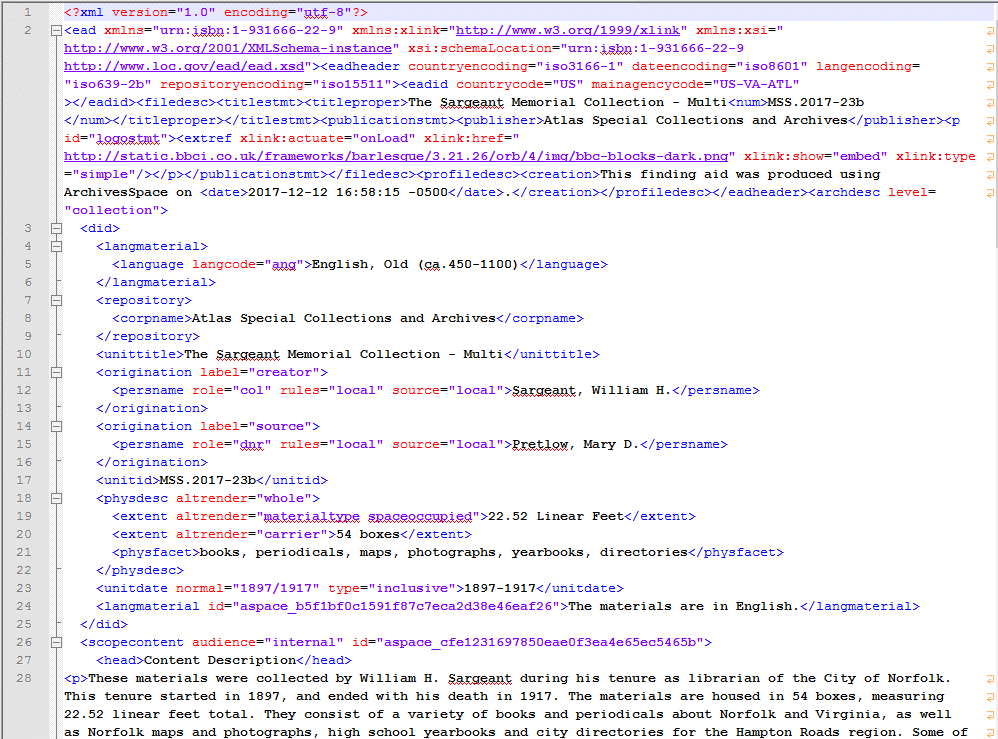
Export Options Explained
Include Unpublished
When checked, this option includes components that are marked as unpublished in ArchivesSpace. This is useful for internal review but should typically be unchecked for public-facing exports.
Include DAO Tags
Digital Archival Object tags link to digital content. Check this if you want to include links to digital materials in your EAD export.
Use Numbered Component Tags
This option uses <c01>, <c02>, etc. instead of unnumbered <c> tags, which can be helpful for certain systems that require numbered component levels.
EAD3 Schema
Exports the finding aid using the newer EAD3 standard instead of EAD 2002. Choose based on your system requirements and compatibility needs.